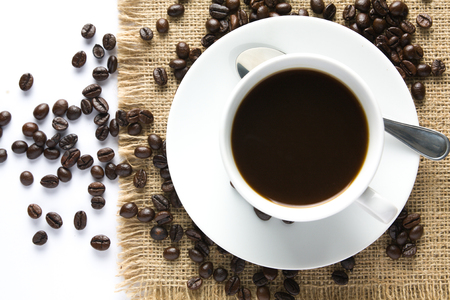Introduction to Moka Pot Brewing in the UK
The humble Moka Pot, with its iconic octagonal shape and stovetop simplicity, has earned a loyal following across Britain. First invented by Alfonso Bialetti in Italy during the 1930s, this compact brewer quickly found its way into British kitchens, blending continental flair with our own love of a good cup of coffee. In recent years, as the nation’s appreciation for quality home-brewed coffee has soared, the Moka Pot has become a staple for both aspiring and seasoned home baristas. Its ability to deliver rich, espresso-like coffee without complex machinery appeals to those who value both tradition and practicality. From city flats in London to cosy cottages in the Lake District, the Moka Pot is cherished for its reliability and versatility—making it a favourite choice for anyone seeking barista-level results without leaving home. As we continue, you’ll discover why so many Brits trust their morning brew to this classic piece of kit and how you can master it yourself.
2. Assembling Your Kit: British Essentials
Before you start brewing with a Moka Pot, its vital to assemble the right kit, especially if you want to achieve that perfect cup in a typical British home. The following is a concise guide to the fundamental equipment and ingredients youll need, along with expert tips tailored for British kitchens.
Core Equipment Checklist
| Item | British Recommendation | Why It Matters |
|---|---|---|
| Moka Pot | Bialetti or similar Italian-made aluminium or stainless steel pot (3-cup is ideal for one or two people) | Classic design, reliable performance; 3-cup size fits smaller UK hobs and households |
| Kettle | Electric kettle (common in UK homes) | Fast boiling; pre-heating water reduces bitterness and extraction time |
| Coffee Grinder | Burr grinder (manual or electric) | Consistent grind size for best extraction; avoid blade grinders if possible |
| Scale | Digital kitchen scale (grams preferred) | Precision in measuring coffee and water improves repeatability and taste |
| Tamper/Spoon | Slim spoon or dedicated tamper for even coffee bed | Ensures uniform extraction; most British teaspoons suffice |
| Mug or Cup | Sturdy ceramic mug or traditional British teacup | Ceramic retains heat; adds a homely touch to your brew ritual |
Choosing Locally-Sourced Ingredients
Coffee Beans:
Select freshly roasted beans from a reputable British roaster—look for blends suited to espresso-style brewing. Popular choices include medium to dark roasts with chocolatey or nutty notes, which pair well with milk or as a straight shot.
Water:
The quality of your water can make or break your brew. In the UK, tap water varies greatly by region:
| Region | Water Type | Recommended Action |
|---|---|---|
| London & South East | Hard water (high mineral content) | Use filtered or bottled spring water for cleaner taste and better Moka Pot longevity. |
| Northern England & Scotland | Softer water (lower mineral content) | Tap water often suffices; check for any strong chlorine taste. |
Accessories & Extras:
- Coffee storage: Airtight tin or jar to keep beans fresh, away from light and moisture.
- Cup warmer: Optional, but warming your mug with hot water keeps your coffee hotter for longer—a practical tip for draughty British kitchens.
Tried-and-Tested Tips for the British Home Barista:
- If using soft tap water, you may not need additional filtration, but always taste before brewing.
- Avoid supermarket pre-ground coffee when possible; grind fresh just before brewing for peak flavour.
Your kit, thoughtfully assembled and tailored to local conditions, forms the foundation of every great Moka Pot experience. Next up: mastering the art of grinding and dosing for consistency—British style!

3. Prepping Like a Pro: Coffee Selection and Grinding
When it comes to brewing the perfect cup with your Moka pot, the journey starts long before you add water or flick on the hob. Choosing the right coffee and nailing your grind are essential steps—ones that many British baristas take seriously. Here’s how to prep like a pro and set yourself up for Moka magic.
Coffee Beans: The British Favourites
In the UK, taste preferences tend to lean towards well-balanced profiles—think chocolatey notes, gentle acidity, and a satisfying body. Single-origin beans from South America, especially Brazilian or Colombian varieties, are hugely popular for their smoothness and crowd-pleasing flavour. Blends with a touch of African beans are also common among local roasters, bringing subtle brightness without overpowering bitterness. When visiting your local coffee shop or roastery, don’t hesitate to ask what’s freshly roasted—many independents pride themselves on their seasonal selections.
Supporting Your Local Roaster
If you want your brew to truly shine, source your beans as fresh as possible. Britain’s independent roasters are passionate about quality, traceability, and sustainability. Chat with them about your brewing method—they’ll likely offer tailored advice and can even grind your beans to order if you don’t own a grinder yet.
The Ideal Grind Size for Moka Pot Brewing
Your grind size is make-or-break for Moka pots. Too fine (espresso-level) and you risk over-extraction or clogging; too coarse (like French press) leads to weak, underwhelming results. Aim for a texture just finer than table salt—often described as “medium-fine.” It should feel slightly gritty between your fingers but not powdery.
Top Tip:
If you’re using a burr grinder at home, start at a medium setting and adjust after tasting your first batch. If buying ground coffee from a shop, specify that it’s for a stovetop or Moka pot—the barista will know exactly what you need.
Maximising Freshness
To get the most from your beans, store them in an airtight container away from light and heat. Only grind what you need just before brewing; this keeps those nuanced flavours intact. Remember: freshly ground beans make all the difference, especially in the typically soft British water which can mute subtle notes if the coffee isn’t vibrant enough.
With thoughtful bean selection and attention to grind size, you’re already halfway to Moka perfection—just like any seasoned British barista would do it.
4. Step-by-Step Brewing: The Method Unpacked
Brewing with a Moka pot is almost ritualistic in many British households that appreciate the craft of coffee. To reach that perfect cup, it’s essential to follow each stage attentively, keeping in mind a few local quirks and classic mistakes often made on this side of the Channel. Here’s a comprehensive walk-through, tailored for British kitchens, including timings and helpful hints.
Stage 1: Filling the Kettle (Base Chamber)
Tip: Use freshly boiled water from your kettle—this speeds up brewing and prevents the coffee from tasting metallic or over-extracted.
How much? Fill up to the pressure valve (usually just below halfway). Avoid overfilling; this is a common mishap in British kitchens keen on ‘just a bit more’.
Common Mistakes
- Overfilling leads to sputtering and weak extraction.
- Using cold tap water extends brew time and can result in bitter flavours.
Stage 2: Adding the Coffee
Coffee grind: Medium-fine (think slightly coarser than espresso, finer than for a cafetière).
Packing: Level off gently without tamping down—British baristas often make the error of packing too tightly, mistaking it for espresso prep.
Amount: Fill the filter basket to the brim for best results.
Quick Reference Table
| Moka Pot Size | Coffee Amount (g) | Water Amount (ml) |
|---|---|---|
| 1-cup | 7 | 60 |
| 3-cup | 15 | 200 |
| 6-cup | 25 | 300 |
Stage 3: Assembly & Heating
Screw together firmly but not overly tight.
Set on a medium-low hob—avoid high heat, as British gas hobs can run hot and scorch your brew.
Brew time: Expect 4–5 minutes for most pots. Listen for a gentle bubbling sound; if it spits or hisses violently, turn down the heat immediately.
Troubleshooting Classic Blunders
- If coffee gushes out quickly: Heat is too high, or grind is too coarse.
- If nothing happens after 5 minutes: Water level may be too low or grind too fine, causing blockage.
Stage 4: Serving Like a Pro
Straight away is best. Pour into warmed cups—cold crockery is a silent culprit for lukewarm brews across Britain. Add milk if desired (a splash of whole milk works wonders), but avoid letting brewed coffee sit on the hob; over-extraction will spoil your efforts.
Brew Timings Summary Table
| Moka Pot Size | Total Brew Time (min) | Cue to Finish Brewing |
|---|---|---|
| 1-cup | 3–4 | Bubbling slows, aroma peaks |
| 3-cup | 4–5 | Sputtering starts gently |
| 6-cup | 5–6 | Coffee stream lightens in colour |
This method, with its attention to detail and avoidance of typical blunders, will help any British barista achieve Moka pot perfection every time.
5. Serving the Perfect Moka Coffee, British Style
Suggestions for Serving
Once your Moka pot has worked its magic, it’s time to serve up your coffee with a touch of British finesse. Pour the freshly brewed coffee immediately into pre-warmed cups to preserve its rich aroma and heat. Small espresso cups are traditional, but a sturdy British mug is perfectly acceptable—especially if you prefer a longer, more comforting drink. For an extra flourish, offer a small jug of hot water on the side, allowing guests to tailor the strength to their liking—a nod to the classic café Americano style found in many UK coffee houses.
Classic British Accompaniments
No cup of coffee in Britain is complete without a thoughtful accompaniment. Serve your Moka coffee alongside a selection of classic biscuits—think digestives, shortbread fingers, or even a slice of fruitcake for an afternoon treat. If you’re feeling indulgent, offer buttery scones or crumpets with jam and a pat of proper British butter. For those who enjoy their coffee after supper, a square of dark chocolate or a small piece of cheese can make for an elegant pairing that complements the robust notes of Moka-brewed coffee.
Tailoring Strength and Milkiness
Coffee preferences across the UK can vary widely; some prefer their brew strong and black, while others favour a milder, creamier cup. To cater to all tastes, provide warm milk or cream on the side. Whole milk is often favoured for its richness, but oat or almond milk also make excellent alternatives for guests with dietary preferences. For those seeking that distinctive ‘white coffee’ beloved by many Brits, encourage adding just enough milk to soften but not overpower the boldness of the Moka extraction. If serving a crowd, consider offering both single and double shots from your Moka pot so everyone can find their ideal strength.
Expert Tip: Embrace British Individuality
The beauty of serving Moka pot coffee in Britain lies in celebrating each guest’s unique taste. Encourage conversation about favourite accompaniments and ratios—whether someone prefers just a splash of milk or insists on dunking their biscuit first. By combining Italian brewing tradition with British hospitality and preference for customisation, you’ll ensure every cup is served just right.
6. Troubleshooting and Fine-Tuning
Even with a careful step-by-step approach, British baristas often encounter challenges that can compromise their Moka Pot brew. Let’s address the most common hurdles—water hardness, grind inconsistency, and adapting your technique to different types of hobs—with practical solutions tailored for the UK home brewer.
Water Hardness: Navigating Britain’s Varied Waters
Hard water is a well-known issue across many regions of the UK, affecting both taste and equipment longevity. If you notice limescale buildup in your Moka Pot or a chalky aftertaste in your coffee, consider these steps:
Solution:
- Use filtered or bottled water if your tap water is particularly hard.
- Descale your Moka Pot regularly using a mild vinegar solution (one part white vinegar to three parts water), then rinse thoroughly.
- If brewing away from home, always check local water profiles—many British cities publish this information online.
Grind Inconsistency: Getting the Right Texture
British supermarkets often stock pre-ground coffee, which may not be ideal for Moka Pots. Too coarse and the brew tastes weak; too fine and it risks bitterness or blockages.
Solution:
- If possible, invest in a burr grinder for greater consistency. Aim for a grind slightly finer than for a cafetière but coarser than espresso—like table salt.
- If using pre-ground supermarket coffee, give it a quick pulse in a spice grinder to refine the texture.
- Ask your local roaster or coffee shop to grind beans specifically for stovetop use—many are happy to oblige.
Electric vs Gas Hobs: Adapting Your Technique
The type of hob you’re brewing on can make more difference than you might think, especially with the prevalence of electric and induction stoves in British kitchens.
Gas Hob Tips:
- Use a low-medium flame to avoid scorching the base; flames should never lick up the sides of your pot.
- A gas hob offers responsive heat control—reduce the heat as soon as coffee begins to emerge in the upper chamber.
Electric & Induction Hob Tips:
- If using induction, ensure your Moka Pot is compatible; otherwise, an induction adapter plate works well.
- Electric hobs retain heat longer, so remove the pot from the ring just before brewing finishes to prevent over-extraction and burnt flavours.
Final Note:
Troubleshooting is all part of refining your craft. With these solutions, you’ll sidestep common British pitfalls and bring out the best in every cup brewed with your Moka Pot.
7. Moka Pot Maintenance and Sustainability
Looking After Your Moka Pot in the UK Climate
The British climate is famously damp and can be unforgiving to metal kitchenware. To keep your Moka Pot in top condition, always ensure it is thoroughly dried after every use. Moisture left on the aluminium or stainless steel surfaces can encourage corrosion or tarnishing, so a gentle towel dry followed by air drying is best practice. Avoid storing your Moka Pot with any residual water inside, as this will only speed up deterioration—especially in our unpredictable weather.
Sustainable Cleaning Habits for Everyday Use
Proper maintenance doesn’t require harsh chemicals; in fact, a simple rinse with warm water is often enough. For more stubborn coffee oils or build-up, use a soft brush or cloth rather than abrasive pads that might scratch the surface. Traditional British sensibility values both thrift and longevity, so steer clear of dishwashers which can degrade gaskets and seals over time. Instead, disassemble the pot, give each part a careful clean, and let them dry separately. If you notice any persistent odours, a mild solution of bicarbonate of soda (baking soda) and water does wonders—just rinse thoroughly afterward.
Prolonging Your Moka Pot’s Life: A British Barista’s Perspective
Respect for your brewing equipment is at the heart of every great cup. In true British fashion, treat your Moka Pot as you would a cherished teapot: handle with care, avoid unnecessary knocks, and inspect the rubber gasket regularly for wear and tear. Replacement gaskets are inexpensive and extend the working life of your brewer considerably. Store your Moka Pot unassembled if possible—this prevents lingering moisture from compromising seals or metal parts.
Mindful Brewing Means Less Waste
Finally, think sustainably about what goes into—and comes out of—your Moka Pot. Recycle used coffee grounds in your compost or as a natural deodoriser around the home. Choose Fairtrade or Rainforest Alliance-certified beans where possible to support ethical sourcing. By nurturing your Moka Pot with care and attention, you not only honour the craft of coffee but also exemplify a proper British respect for a good brew—ensuring countless mornings of rich, satisfying espresso for years to come.


